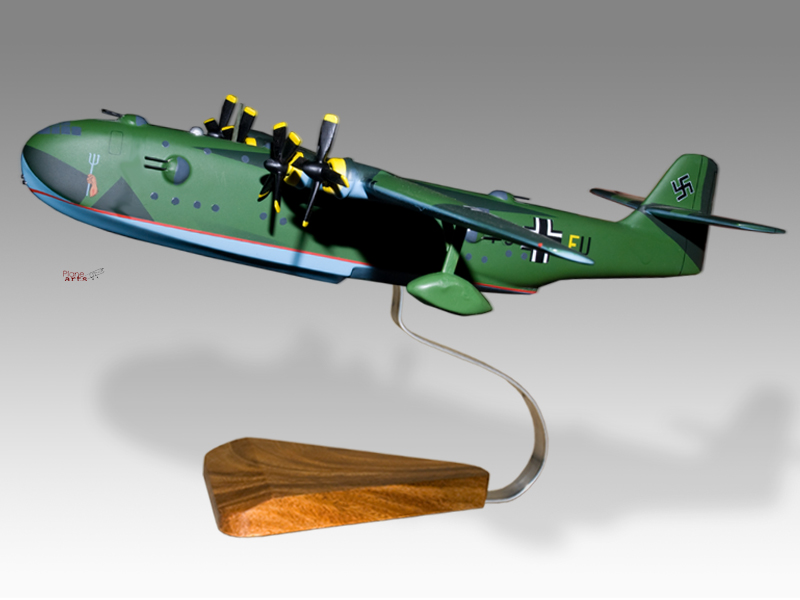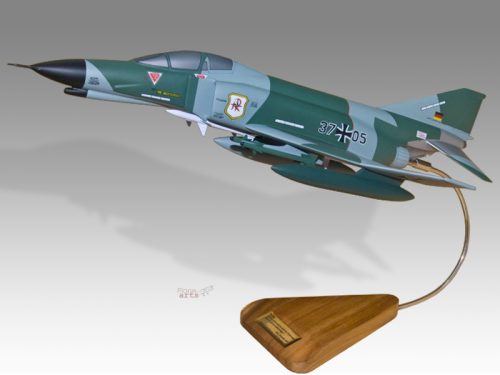Heinkel He 220 Luftwaffe German Air Force
Production Time 9 to 10 weeks
Shipment is by FedEx, UPS or DHL International Express Courier with a normal door-to-door delivery time worldwide of within 2-3 business days after dispatch. Due to the current volatility of world fuel prices, the amount mentioned here is our best estimate for DHL and UPS and may be subject to change at the time of shipping.

Model Description: Heinkel He 220 Luftwaffe German Air Force Wood Replica Scale Custom Model Aircraft
Manufacturer: Heinkel
Wingspan: 17 Inches (43.2 Centimeters)
Height: 3.4 Inches (8.6 Centimeters)
Scale: 1:133
$239.50
Production Time 9 to 10 weeks
-
United States dollar ($)
-
Pound sterling (£)
-
Euro (€)
-
Australian dollar ($)
-
Canadian dollar ($)
-
Singapore dollar ($)
-
Swiss franc (CHF)
-
Japanese yen (¥)
-
Danish krone (kr.)
-
Hong Kong dollar ($)
-
Norwegian krone (kr)
-
Swedish krona (kr)
-
United Arab Emirates dirham (د.إ)
General Product Description
Our PlaneArts Heinkel He 220 Luftwaffe German Air Force model exhibits unique, unrivaled quality and detailed design to come as close as possible to the accuracy of the actual plane. It comes as standard with a robust, durable base or stand which is available in a variety of different finishes designed to match your own personal requirements including solid wood, wood with polished metal supports or adjustable wood wall mount and will be ready within about 9-10 weeks from placement of order.
The Heinkel He 220 Luftwaffe German Air Force model is made of the finest kiln dried renewable mahogany wood (commonly known as Lauan or Meranti) which has undergone many stages of carving and meticulous and careful sanding giving the beautiful, finished museum quality masterpiece. Many collectors and model connoisseurs demonstrate their preference for genuine handmade and hand painted mahogany wood models rather than plastic or die cast (diecast) alternatives due to the overall look and totally different feel of the item - we trust you will find the same. We can however, if required produce the same model in Solid Cast Resin so just click and contact us for further information. Our craftsmen and gifted artisans ensure that our finely handcrafted model airplanes match the precise blueprint details of the original aircraft. The paint scheme, markings and parts are closely matched, reflecting the original aircraft. This stylish top-quality desktop replica model will surely enthrall anyone who receives this as a gift and for sure one of the most appropriate and desirably collectable gifts for any military aviation enthusiast and avid aircraft collector whilst also displaying a perfect resemblance to the actual real life version.
There are many types of military propeller aircraft, but the basic types are bombers, fighters, fighter bombers, spotter planes, transporters, patrol aircraft, trainers, and reconnaissance and observation aircraft. All these types of aircraft are used for different types of missions. If you're a fan of historic or present-day military aviation, our model aircraft will bring the excitement and character of these aircraft right into your own home. You can order a wood airplane model of a North American B-25 Mitchell Bomber, a B17 - Flying Fortress, or a P-51 Mustang Nervous Energy V not forgetting the Bf 109, Spitfire, FW 190, A6M Zero, P-38 and F4U. These classic, propeller airplane models are of the highest quality. Each is individually crafted by our expert craftsmen. They produce handmade scale mahogany airplane models of the finest aircraft from World War I and II to present day biplanes and triplanes.
If you require, we can also make the Heinkel He 220 Luftwaffe German Air Force model in any other military, government or even private livery or colour scheme you require and if necessary, in a different size or scale. Just click here to contact us with a description or photographs of what you require, and we will let you have a quotation for the necessary customization by return email. We can also make bespoke scale replicas of any other private / civil commercial airliner or airliners, helicopter, glider, gliders with engines, military jet, warplane jets, biplane, triplane, tail fin, spacecraft, rocket or NASA model you require in any airline, military or civilian livery or colors. We also produce model airships, blimps, dirigibles, blimps, boats, and ship collectibles. Wall plaque or seal for military, government or private customers. Again, by clicking here to contact us just let us know exactly what you need.
The Heinkel He 220: A Glimpse Into a Forgotten Fighter
The Heinkel He 220 remains a largely overshadowed aircraft from the World War II era, primarily due to its developmental challenges and limited deployment. As a project from Heinkel, one of Germany’s foremost aviation manufacturers, the He 220 was intended to be a versatile fighter aircraft for the Luftwaffe. This article explores the technical specifications and historical context of the He 220, a plane that could have made a significant impact had it reached full operational status.
Development and Design
The Heinkel He 220 was conceived in the early 1940s as part of Germany’s ongoing efforts to maintain aerial superiority. It was designed to serve multiple roles, including as a fighter, interceptor, and reconnaissance aircraft. The development of the He 220 was marked by the Luftwaffe’s high demands and the challenging technological requirements of the time.
Key Specifications:
- Engine: The He 220 was powered by two DB 603 engines, which were among the most powerful aero engines developed by Daimler-Benz at the time. Each engine produced approximately 1,750 horsepower, which allowed for high-speed performance and quick ascension.
- Speed and Range: With a top speed estimated at around 650 km/h, the He 220 was designed to match or exceed the velocities of contemporary Allied fighters. It featured a range sufficient to perform extended missions without requiring frequent refueling, enhancing its effectiveness as a long-range fighter.
- Armament: The aircraft was armed with two 20 mm MG 151 cannons and two 13 mm MG 131 machine guns, providing it with formidable firepower. This armament configuration was intended to make the He 220 effective in both air-to-air combat and in attacking ground targets.
- Avionics: For its time, the He 220 included advanced avionics, including a radar system for night-fighting capabilities, a feature that was becoming increasingly important as the war progressed.
Operational History:
The Heinkel He 220’s development faced several hurdles, including competition from other aircraft manufacturers and shifting priorities within the Luftwaffe. By the time its prototypes were ready for testing, the Luftwaffe had moved on to other designs that promised quicker results with fewer developmental challenges. Consequently, the He 220 did not proceed beyond the prototype stage.
Challenges and Limitations:
- Technical Difficulties: The complex engineering required for the He 220 resulted in production delays. Moreover, the high-performance engines it used were in short supply and were earmarked for other aircraft in the Luftwaffe’s arsenal.
- Strategic Shifts: As the war progressed, the strategic needs of the Luftwaffe shifted towards aircraft that could support a defensive war effort. The focus turned towards interceptors and ground-attack aircraft rather than versatile fighters like the He 220.
Conclusion:
The Heinkel He 220, with its advanced design and impressive technical specifications, could have been a significant asset to the Luftwaffe. However, due to a combination of technological and strategic challenges, it remained a forgotten chapter in the annals of military aviation history. This aircraft exemplifies the complexities and rapid evolution of aerial combat technology during World War II, and serves as a reminder of the projects that, for various reasons, never reached their full potential.
| Weight | 6 kg |
|---|---|
| Dimensions | 12.6 × 17 × 3.4 in |
Be the first to review “Heinkel He 220 Luftwaffe German Air Force” Cancel reply
Similar Models
Military Airplanes - Jet
Military Airplanes - Propeller
Military Airplanes - Propeller
Military Airplanes - Propeller
Military Airplanes - Jet
Military Airplanes - Propeller
Military Airplanes - Propeller
Military Airplanes - Propeller
Military Airplanes - Propeller
Military Airplanes - Propeller
Military Airplanes - Propeller
Military Airplanes - Propeller
Military Airplanes - Propeller
Military Airplanes - Propeller
Military Airplanes - Propeller
Military Airplanes - Jet
Airbus A310 MRTT Luftwaffe German Air Force Refuelling Eurofighter Models





























Reviews
There are no reviews yet.